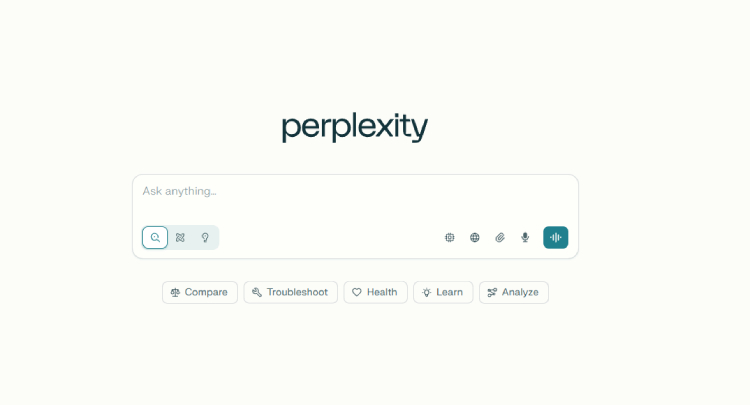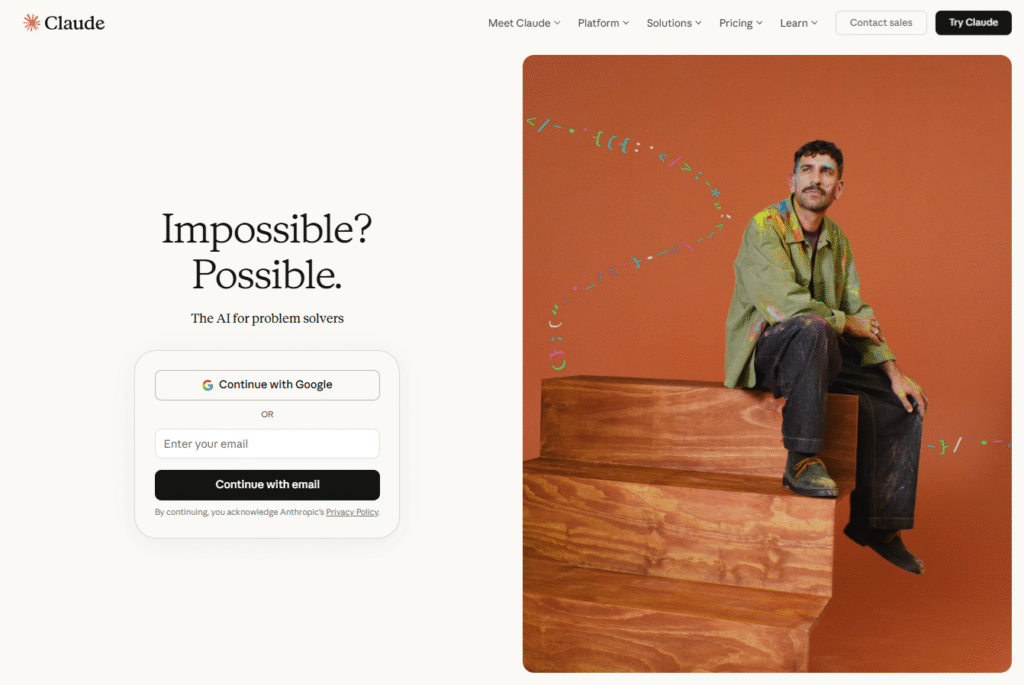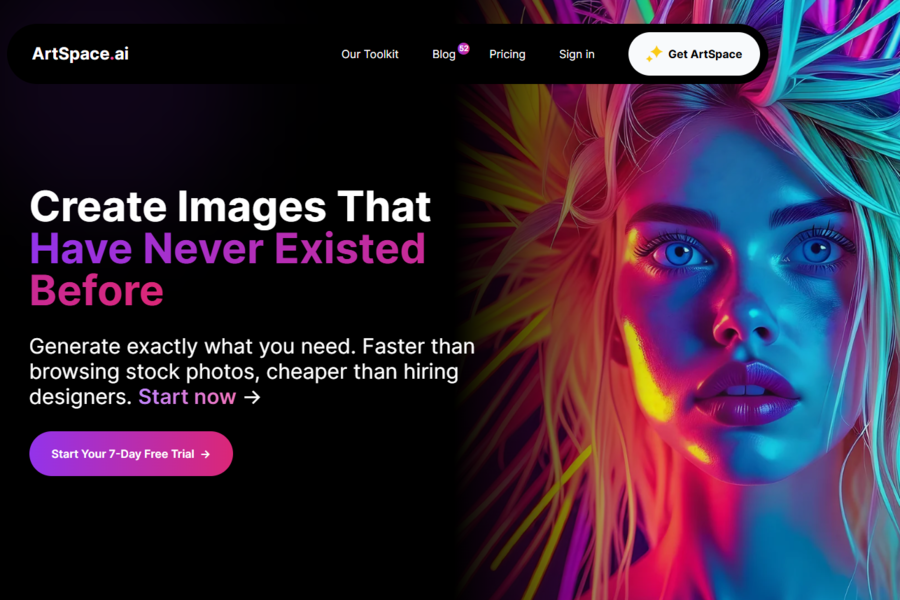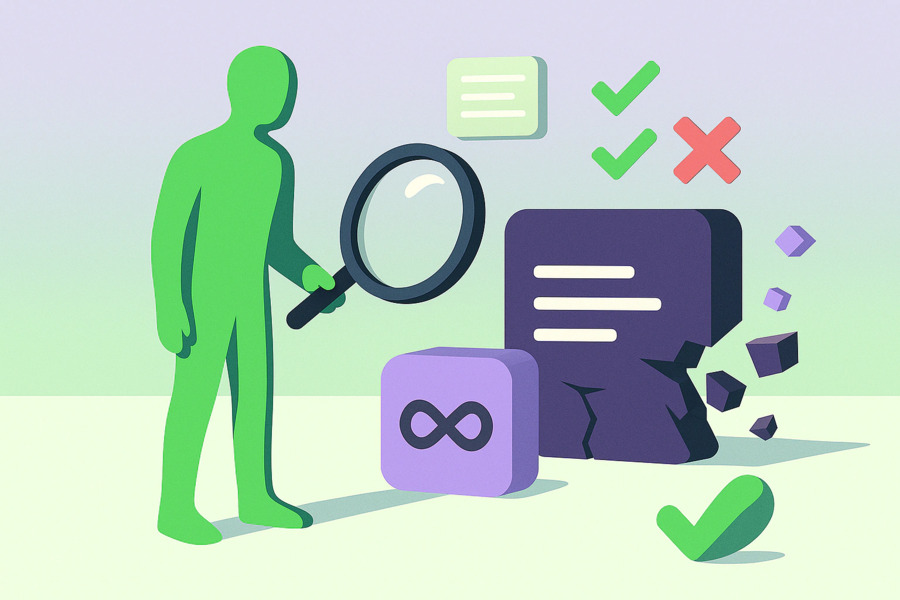The rapid evolution of artificial intelligence has created two distinct frontrunners: Perplexity AI, the lightning-fast answer engine, and Claude AI, the thoughtful reasoning partner. This isn’t just another tech comparison—it’s about finding the right cognitive partner for your specific needs.
Whether you’re a researcher chasing verified facts or a creative professional building complex narratives, understanding the Perplexity vs Claude dynamic could revolutionize how you work, create, and think.
What is Perplexity AI?
Launched in 2022, Perplexity AI quickly carved out a niche that sets it apart from both traditional search engines and pure-play LLMs. It’s not just a chatbot; it’s better described as a “conversational answer engine.” Think of it as the highly focused offspring of a powerful LLM and a real-time web crawler.
Unlike a standard Google search that spits out a daunting list of links, Perplexity leverages its large language model capabilities in tandem with live web search to deliver a concise, synthesized, and, most importantly, sourced answer. This fusion means you get the latest news, up-to-the-minute market shifts, and fresh academic research without having to click through a dozen tabs.

Pros of Perplexity
- Accuracy in Information Retrieval: Excels at finding narrow, factual answers by drawing from multiple current sources. This makes it highly reliable for specific topics, dates, or factual checks.
- Real-Time Data Access: Its reliance on a live web search means it is perpetually up-to-date, making it the superior tool for analyzing current events, market trends, and breaking news.
- Verification Through Citations: The inclusion of inline citations is a massive advantage for professional use, allowing users to quickly verify the information and explore the source material deeper.
- User-Friendly Interface: The platform is designed for efficiency and speed. The intuitive layout makes it incredibly easy for users of all technical levels to navigate and retrieve complex information quickly.
- Integration with Multiple Data Sources: It intelligently combines information from various databases and web sources, ensuring responses are comprehensive and well-rounded, not just based on a single search result.
Cons of Perplexity
- Limited Conversational Depth: While functional, its interaction style is transactional. It focuses on query-response and lacks the nuanced, multi-turn conversational capabilities needed for true engagement or complex tutoring.
- Surface-Level Responses for Nuanced Topics: For in-depth, open-ended, or highly nuanced queries—the kind that requires deep ethical reasoning, complex synthesis, or creative abstraction—Perplexity’s answers can sometimes feel less comprehensive compared to a model like Claude.
For more details, read our post on Perplexity AI Review.
What is Claude?
Claude AI, developed by Anthropic, represents the pinnacle of “Constitutional AI.” Its development is deeply rooted in safety and ethical rigor, which fundamentally shapes its output. Claude is a family of large language models specifically engineered for tasks that demand deep reasoning, extensive contextual awareness, and genuine creativity.
Where Perplexity is a tool for finding information, Claude is a tool for processing, synthesizing, and creating new content from it. It stands out for its remarkable ability to handle complex, multi-step problems, maintain deep, nuanced, and engaging conversations, and produce thoughtful, highly original content. This is why Claude is celebrated for creative writing, advanced policy analysis, and, notably, superior performance in complex coding scenarios.
Anthropic offers a flexible lineup to meet diverse needs: Haiku (built for speed and lightweight tasks), Sonnet (the balanced, all-around performer), and Opus (the flagship, most capable model for highly complex and demanding work). This tiered approach ensures users can select the ideal blend of performance and cost. For professionals in fields like consulting, legal research, and the arts, Claude’s commitment to reliability and ethical grounding makes it a preferred partner for critical tasks.

Pros of Claude
- Engaging and Deep Conversations: Claude’s design prioritizes high-quality dialogue. Its ability to retain context across many turns makes it an excellent candidate for customer service applications, personalized tutoring, and brainstorming partners.
- Complex Problem-Solving and Reasoning: It is superior at tackling intricate questions, logical puzzles, or tasks that require several steps of abstract reasoning and synthesis, often outperforming other models in true cognitive depth.
- Highly Accurate Contextual Responses: With a massive context window, Claude can “remember” a significant amount of prior interaction. This allows it to provide responses that are not only relevant but also highly tailored and accurate based on the entire history of the conversation.
- Excellence in Creative and Code Generation: Its deep understanding of structure, syntax, and narrative flow enables it to generate sophisticated creative writing (stories, scripts, marketing copy) and advanced, clean code that requires intricate planning.
Cons of Claude
- Dependency on Training Data: Unlike Perplexity, Claude sometimes defaults to relying heavily on its pre-trained data for answers, which can occasionally lead to responses that are either outdated or less factual regarding current events or very recent developments.
- Cost Barrier: The most powerful tiers of Claude (like Opus) often come with a required subscription or a usage fee, which can be a significant cost barrier, especially when compared to the readily available free tier offered by Perplexity.
Read More: Anthropic Launches Claude Skill
Perplexity vs Claude: Key Features Comparison
1. Conversational Abilities
The fundamental difference in how these tools approach conversation reveals their core purposes.
Perplexity operates as an exceptionally efficient search assistant—you ask a question, it provides a sourced answer, and the transaction concludes. The interaction is functional, focused, and designed for maximum efficiency. It’s perfect for when you need specific information quickly, but less ideal for exploring ideas through extended dialogue.
Claude, in contrast, embraces the role of dialogue partner. Its industry-leading context window allows it to maintain coherent, nuanced conversations across dozens of exchanges. This makes it exceptionally valuable for brainstorming sessions, iterative writing projects, or any scenario where building on previous ideas is crucial. The experience feels less like querying a database and more like collaborating with a knowledgeable colleague who remembers everything you’ve discussed.
2. Information Flexibility
When it comes to handling different types of queries, both tools showcase their specialized strengths. Perplexity’s real-time web integration makes it unbeatable for questions about current events, market data, or recently published research. The ability to ask “what happened in the stock market today” or “latest developments in climate policy” and receive instantly sourced answers makes it invaluable for time-sensitive work.
Claude’s power emerges when dealing with complex prompts that require synthesis and original thinking. While it can answer factual questions, its true value appears when you need to analyze multiple documents, identify patterns across different domains, or generate original content based on specific parameters. The need for more detailed prompts is often rewarded with significantly more nuanced and useful outputs, particularly for open-ended challenges.
3. Performance Accuracy
The accuracy conversation reveals another key distinction—it’s not about which tool is more accurate overall, but what type of accuracy matters for your specific task. Perplexity delivers remarkable accuracy for factual retrieval, with the added benefit of source verification. Knowing where information comes from and being able to check original sources provides a layer of confidence that’s crucial for research and professional contexts.
Claude shines in scenarios requiring what we might call “reasoning accuracy”—the ability to navigate complex logical puzzles, ethical dilemmas, or multi-step problems correctly. User experiences consistently highlight Claude’s superiority in situations where the path to the answer matters as much as the answer itself. It’s the difference between knowing what happened and understanding why it happened or what might happen next.
4. User Experience Design
The daily interaction experience with these tools couldn’t be more different. Using Perplexity feels like having the world’s fastest reference desk at your fingertips. The interface prioritizes clean, immediate answers with minimal friction. It’s designed for what we might call “cognitive triage”—quickly assessing what information exists on a topic and moving on to the next task.
Engaging with Claude often feels more like a productive conversation with a particularly insightful colleague. The interface encourages back-and-forth exploration, with responses that frequently raise interesting questions or suggest new angles. This makes extended sessions with Claude feel less like using a tool and more like collaborative problem-solving, which can be incredibly valuable for complex creative or analytical work.
Final Verdict on Perplexity vs Claude
So, who wins the Perplexity vs Claude showdown? The truth is, they’re playing different sports rather than competing in the same game. Your choice depends entirely on what kind of cognitive partner you need for your specific challenges and workflow.
The smartest AI enthusiast understands that these tools are not mutually exclusive. They are complementary. Use Perplexity for the factual bedrock of your work—the instant, verified data points. Use Claude for the heavy cognitive lifting—the analysis, the complex drafting, and the creative generation.
By strategically deploying the right model for the right job, you ensure your AI co-pilot truly maximizes your productivity.



